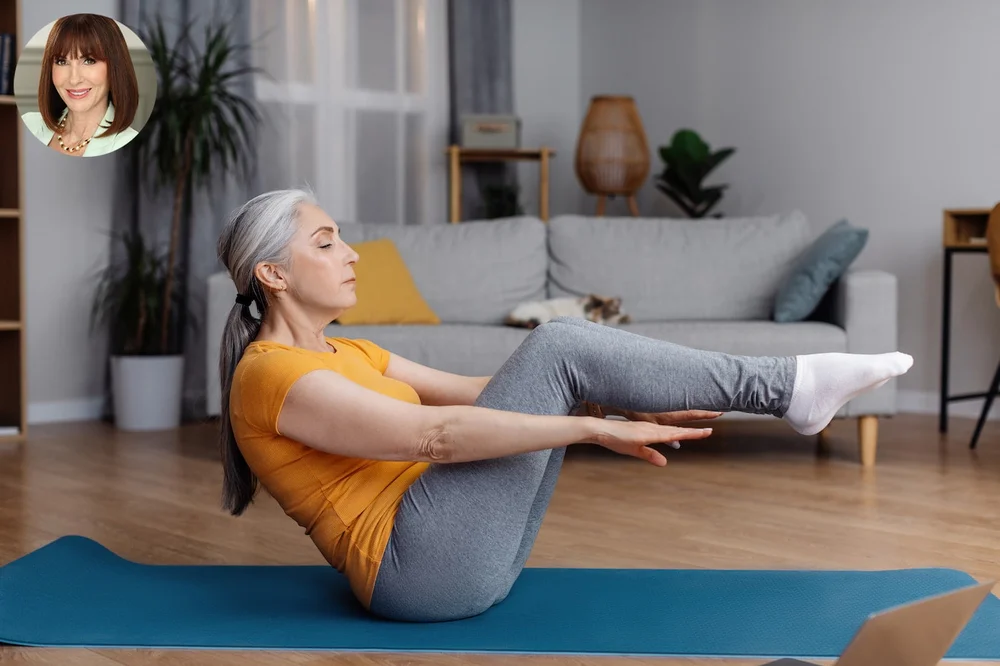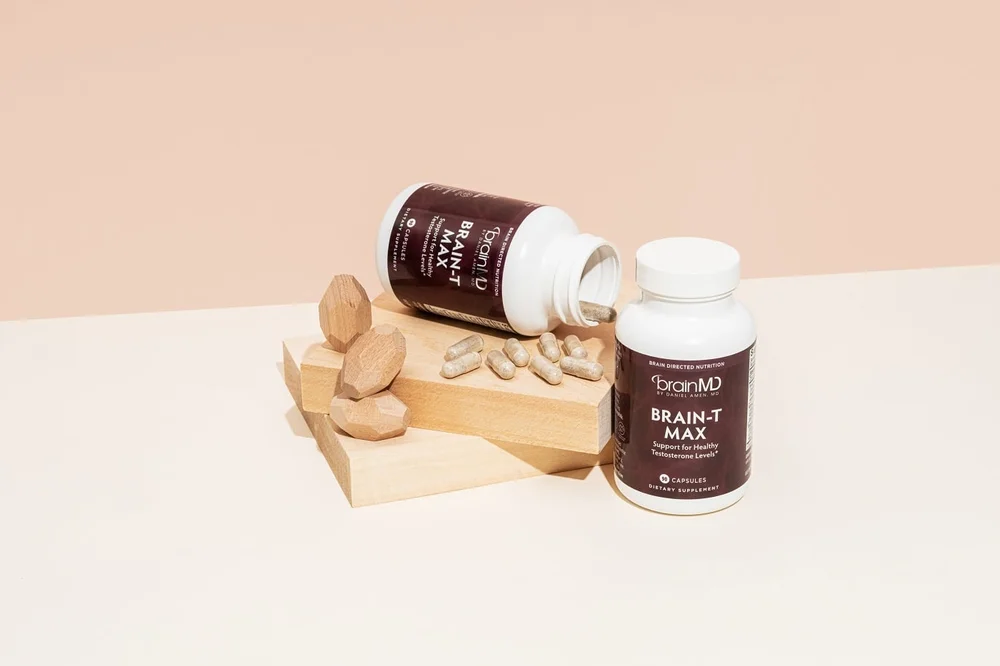Tana Amen’s Favorite Core Strengthening Workouts
True to its name, the core is a crucial part of our bodies that enables us to carry out our most basic daily functions. We engage the core when standing up or sitting down, holding an upright posture, maintaining balance, lifting objects—the list goes on.
That’s why I’m always on the hunt for effective ways to build my core, and one of my favorites is strength training. I recommend including strength training in any regimen 2 to 3 times per week, for about 40 minutes each session. Within these guidelines, in addition to spending time on both the upper and lower body, you’ll want to focus on the super-important muscles that connect them: the core.
Why Is Core Strengthening Important?
First, let’s bust a common myth. The core of your body isn’t just your abs. The core is made up of about 30 muscle groups that connect the spine and hips to the pelvis. Technically, physicians define the core as the body’s torso, or trunk, as well as the pelvic and thoracic girdles. Its muscles can be divided into four functional groups: anterior, posterior, medial, and lateral.
In layman’s terms, this group of muscles allows for stabilization of the body and a range of movements, including bending, twisting, and walking. In addition, a stronger core prevents other parts of the body from overworking to compensate, so it helps prevent unwanted issues like pain or injury. And a strong core helps muscles in the abs, pelvis, and lower back work better in tandem. No wonder our core is so key to our health and vitality!
Just like with any body part, we want to stick to a regular routine so we don’t lose muscle—especially as we age. I remember feeling the effects of a weakened core after my hysterectomy some years back. After resting through the post-op recovery period, I was excited to return to my usual workouts. But I soon found that the surgery really impacted my core muscles, and I had a long journey toward returning to normal. As the saying goes, it’s easier to stay in shape than get in shape. So, as long as your health circumstances permit, stick with a steady core-strengthening routine once you have one in place.
How to Strengthen Your Core
A lot of people who ask me about the best core workouts are surprised when I share some of my favorite moves, because they’re anything but fancy. They’re doable (even if you need modifications) at any level of physical fitness. And, in addition to the 3 moves below, I love martial arts for engaging the core, as well as Pilates and yoga. In fact, you’ll find that with the proper form, all kinds of exercises require engaging the core.
On top of traditional workouts, the chances to strengthen this area of the body are endless throughout your day. Start by simply being mindful of your core as you go about your typical routine, and you’ll notice plenty of opportunities, from walking the dog to climbing stairs. You can even tighten up your core when sitting at a desk.
Just make sure you also set aside time for specific core-strengthening exercises. Check with your doctor before beginning a new regimen if you’re starting from scratch. Once you’re cleared, try these 3 core-strengthening moves I swear by…
3 Best Core-Strengthening Moves to Add to Your Workout!

Planks and Plank Rolls
Planks are great for strengthening the entire body, but they’re an especially useful workout for the core muscles. To do a traditional plank, place your body face-down on the ground. Rest your forearms on the floor so that your right hand is near your left elbow and your left hand is near your right elbow. Raise up your body so that you’re supporting your body weight on your forearms and your toes. Pull your abs in toward your body and ensure you’re positioned in a straight line (don’t stick your backside up in the air or sag your body down to the ground). Hold the position for 8 seconds to start, eventually working up to 30 or 60 seconds with practice.
To turn this move into a plank roll, after the 8-second hold, twist your body to the right so that your right side is facing the wall. Your shoulder and elbow should be lined up. Keep a straight body; don’t let your hips sag toward the ground. Hold the position for 8 seconds. Twist back down to the start position, hold again for 8 seconds, and twist to the left, holding for 8 seconds. Start with 2 to 4 reps (1 rep means cycling through all 3 positions: face-down, right, and left). Work up to 12 reps.
I’ll admit that plank rolls can feel a little advanced for those who are just starting out. So, if you’re totally new to planks, you can try a chair plank. It’s similar to a traditional plank, except you’ll rest your forearms or place your hands on a chair, keeping the body at an angle to the floor instead of parallel to it. This is a great option for newbies or seniors.
Bird Dog
I love this move because it’s one of the safest and most effective core exercises. It helps strengthen the muscles that protect the spine, which is crucial for our posture and balance.
First, start on your hands and knees, in an all-fours position. Make sure your hands are in alignment with your shoulders and your knees are in alignment with your hips, perpendicular to the floor. As you perform the move, keep your eyes looking straight at the ground and keep your head in a straight line with your back, parallel to the floor. Slowly lift your right hand off the ground and extend it out straight forward as you lift your left knee off the ground and extend your left leg out straight behind you.
Hold both limbs there for 5 seconds, then return to the start position. Repeat on the other side, with the left hand and right knee. Do 4 reps per side, eventually working up to 10 to 12 reps on each side.
Dead Bug
It doesn’t sound so appealing, but the dead bug is one of my favorite core workouts to do. It’s simple yet effective, and great for any age group. Plus, it can help diminish or prevent back pain, improve posture, and promote balance. While you can do this with no equipment, I like to hold a weight in my hands and alternate the leg lifts.
To do this move, lie flat on your back. If using a weight or weights, grip them in your hands. For alternating leg lifts, raise both knees to make them perpendicular to the floor, with the knees bent at a 90-degree angle. Extend the left leg straight out (but keep it off the ground) while you extend your arms above your shoulders. Crunch the body inward to return to start position, then extend the right leg and the arms.
You can also extend both legs at once: Keep the body straight, with legs slightly raised off ground, crunching inward to bring the arms above the chest and the knees above the hips. Again, start with a few reps and work up to 12. For an extra core boost, at the end I like to do a burnout crunch—which just means that I do crunches until I can’t anymore.
Core Exercises Offer Full-Body Benefits
If there’s one part of the body that keeps the whole system running smoothly, it’s the core. The good news is that there are so many ways to keep it strong—and keep us mobile. By adding core exercises to your routine, you’ll look fitter, feel stronger, enjoy better posture, and be much less likely to get sidelined by an injury.
And here’s one final tip: I fuel my workouts and body with BrainMD’s Brain MCT Energy. Because better health isn’t just about looking great—it’s an inside job, too.
- 4 Healthy Self-Care Tips: How to Treat Yourself the Right Way -
- Boost Your Mood: The Amazing Benefits of Eating More Fruits & Veggies! -
- Filling Your Cup: Tips for Mental & Spiritual Self-Care -
- 6 Must-Try Healthy Fall Drink Recipes -
- Tana Amen Shares Her Menopause Journey: Finding Health & Balance Naturally -



